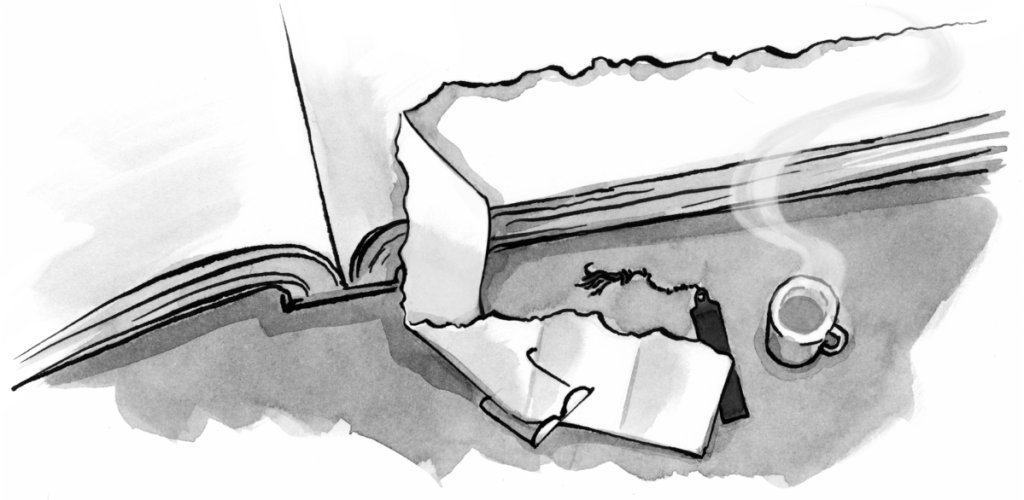Childish, inaccurate, bizarre, and condescending? Perhaps—but you can’t just ignore articles like that. Tomas Chamorro-Premuzic’s Seven Rules for Managing Creative People1 has caused some serious ripples. The article sets lofty standards for missing the point, misrepresenting creative industries to the point of infantilization. At its nadir—“Creatives enjoy making simple things complex, rather than vice versa”—it ranks among the most baffling things ever written about creativity.
Article Continues Below
Commenters have heaped scorn on poor Chamorro-Premuzic, to the extent that I must almost apologize for adding to the criticism. But I’m intrigued by the views that prop up articles like this. Why do these misconceptions about creative work persist in an era of supposed innovative enlightenment?
The premise that underpins this and many similar articles is that creativity is a binary property: some people are blessed (or cursed) with it, others aren’t. This establishes a subtle, unwelcome construct. Creative types are “The Other”: fundamentally irregular people who don’t quite gel with the rest of society (“The Same”). Indeed, what it means to be Same is usually defined in part by not being Other.
While the language of Otherness is sometimes a deliberate tool of oppression, more often it reflects the unthinking bias of the speaker and era. Chamorro-Premuzic’s framing of creative people as The Other is no doubt unintentional. But the archetype is clear nonetheless.
Never, ever, ever let them call you a “creative”. It’s a way to be disenfranchised. You are a designer. It’s not magic, it’s a trade.
— Mike Monteiro (@Mike_FTW) April 7, 2013
On this stage, Chamorro-Premuzic plays the role of ethnographer. Having observed creative people in their natural environments, he uses the article to MBAsplain their aberrant behavior. Rather than recognizing the diverse individuality of creative workers, the author describes them as a homogenous group primarily defined by weakness—a motif that echoes throughout the history of Otherness.
Chamorro-Premuzic’s creative Other is self-centered and unable to play well with peers. He is “moody, erratic, eccentric, and arrogant.” He is unable to properly explain his process. His motivations are bizarre: money doesn’t matter to him, which at least gives you an opportunity to stiff him on pay. His neuroticism and narcissism make him a poor leader: that’s best left to the Sames.
Thankfully, the premise is flawed. Creativity is not a binary ability but a muscle that needs exercise. There is no Same and Other, no us and them; everyone has creative capacity. Personality, environment, and other pressures of life mean that some people do have less creative experience, but with simple tools—a pencil, a guitar, a hobby—it’s not hard to reverse the atrophy.
Modern creative work demands diverse perspectives. To suggest instead that it emanates from the abracadabras of an eccentric elite does a disservice to all parties. The article argues that companies should pass “trivial or meaningless work” to the clock-watchers who lack intrinsic motivation. In other words, some people are best handling the drudgery, while the unmanageables get the rewarding work to keep them quiet.
This situation, dare I say, could use some creative thinking. It can’t be healthy to encourage a cycle of disinterested employees and futile effort. Better to look closely at user needs, explore ideas that address them, and build a team that is inspired by those goals. Then no work should be meaningless.
So how can we counter the assertion that creative workers think and behave the same? By highlighting the diversity of our personalities and methods.
Both Mark Boulton and Chris Coyier have recently written about their introversion and how it affects their creative approaches. These are important, refreshing viewpoints, and no doubt many readers will identify with them. I too have noticed the subtle assumptions some people make about creative workers. Extraversion and arrogance are often presupposed.
Earlier in my career, bosses and peers encouraged me to use collaborative, extravert-friendly tools like design games. I never felt particularly comfortable with them, but persisted, believing them to be techniques that designers were meant to enjoy.
I’ve since realized these aren’t the right tools for me, at least for today. I’m more comfortable working with trusted teammates in managed environments, delving into people’s expectations, and exploring initial concepts alone. It was a relief to free myself from the process expectations of others, and I believe my results testify for my new approach.
After the lashing the article received in the comments, perhaps Chamorro-Premuzic will pause to reflect on his opinions. Perhaps the Harvard Business Review will also look more closely at its editorial policy, and consider whether it fell a little out of step with its audience. But there will be plenty more articles that treat creativity like a disorder, and more executives who brand creative workers as vain and immature.
With diversity issues rightly making headlines in our industry, we should also rejoice in the multitude of personalities and approaches that make up our disciplines. We are, of course, the best placed people of all to counter harmful stereotypes. Only variety can break us out of the Otherness box.




